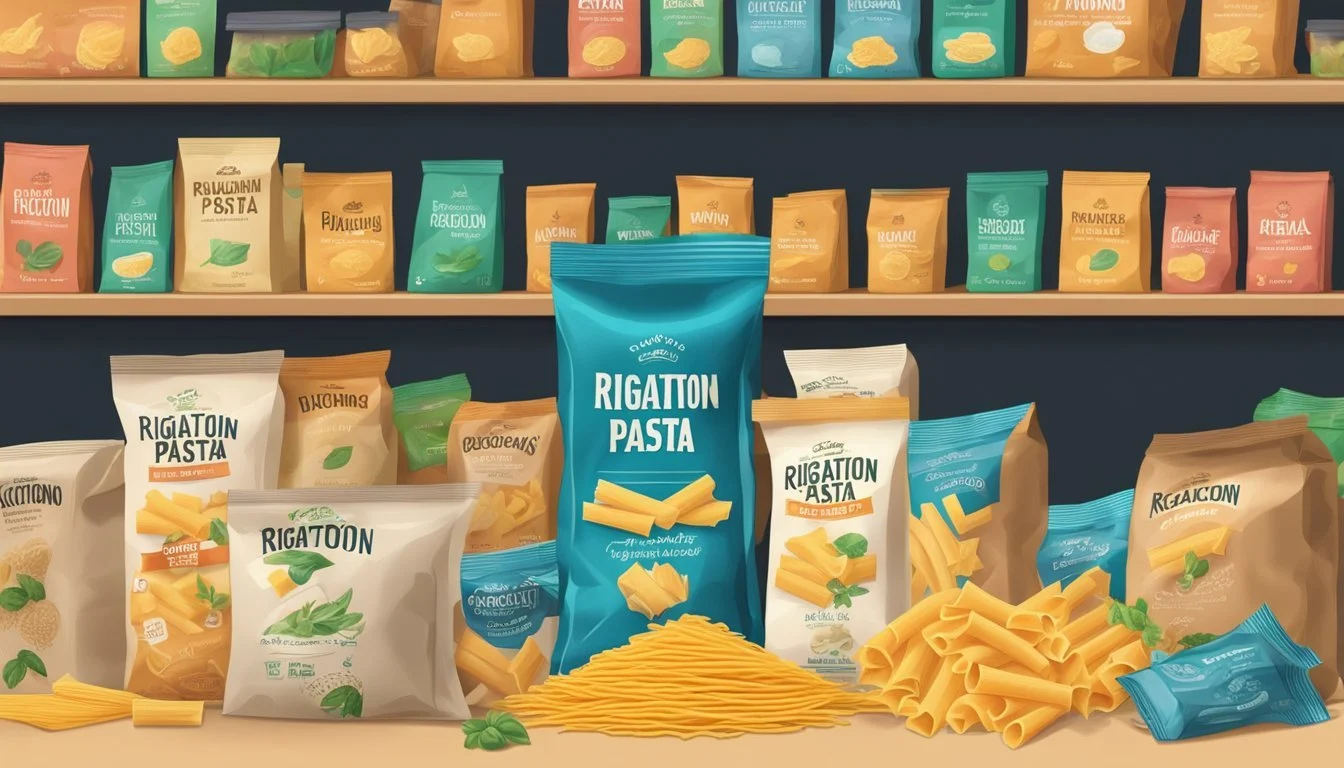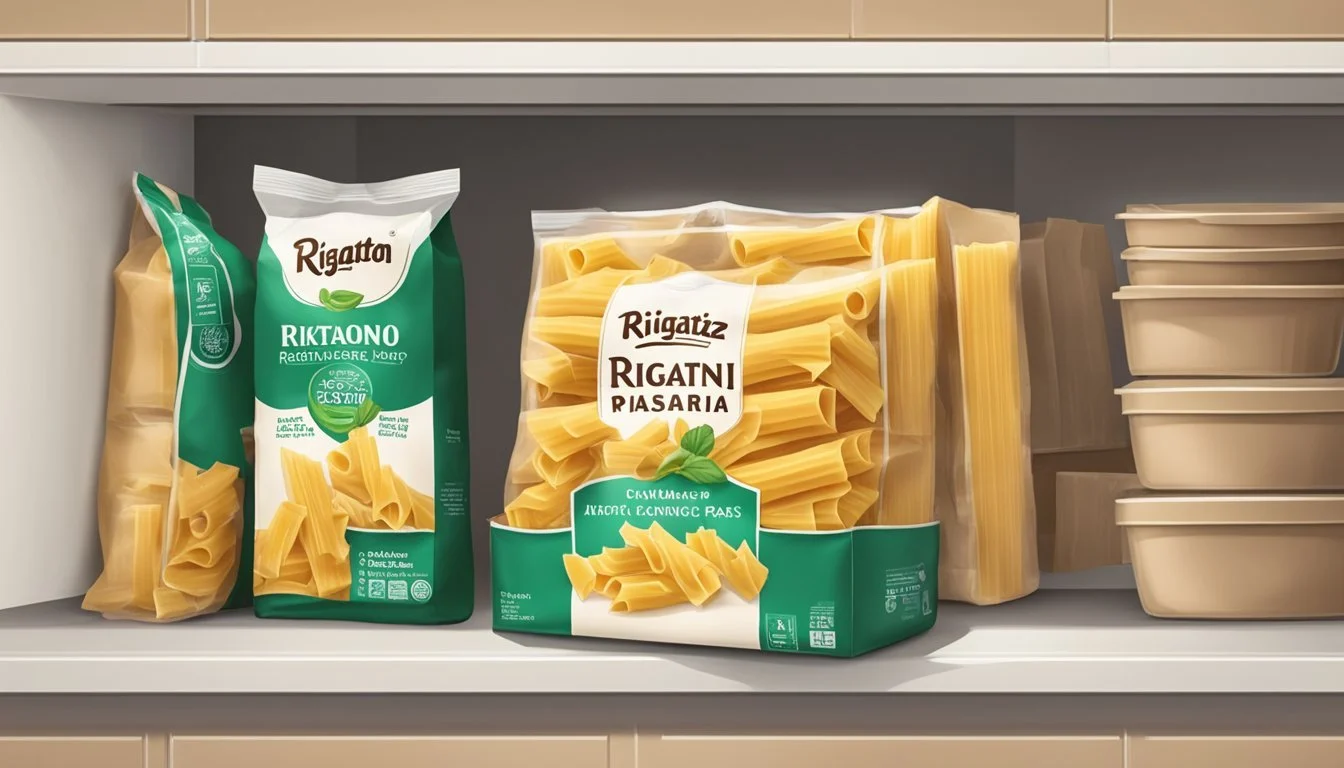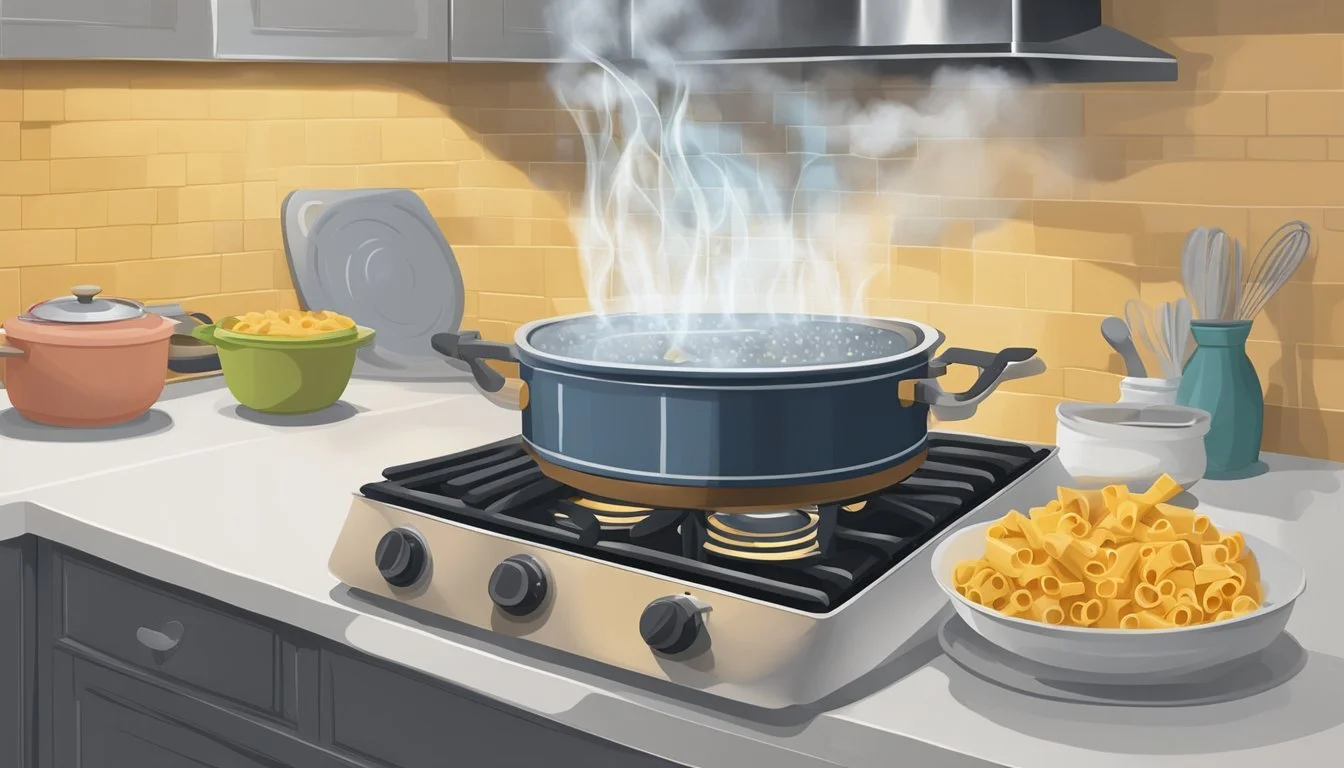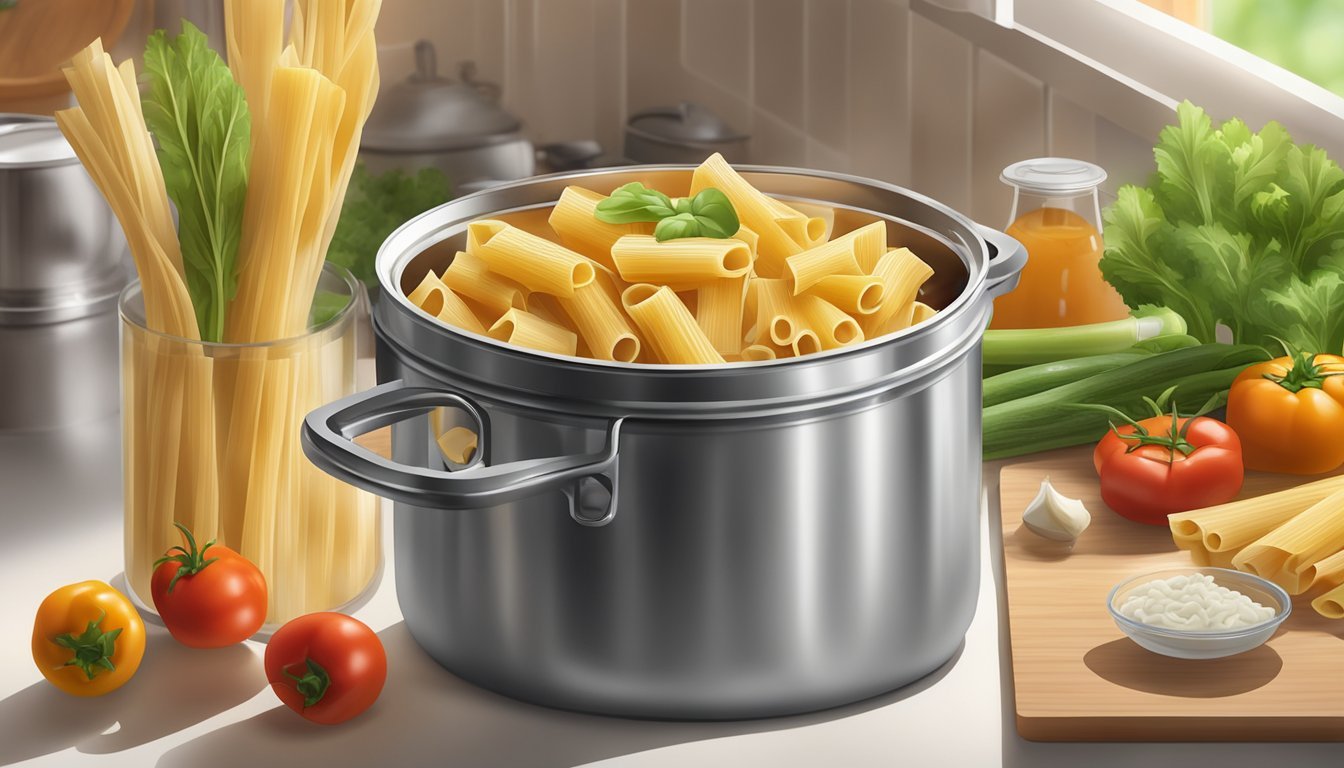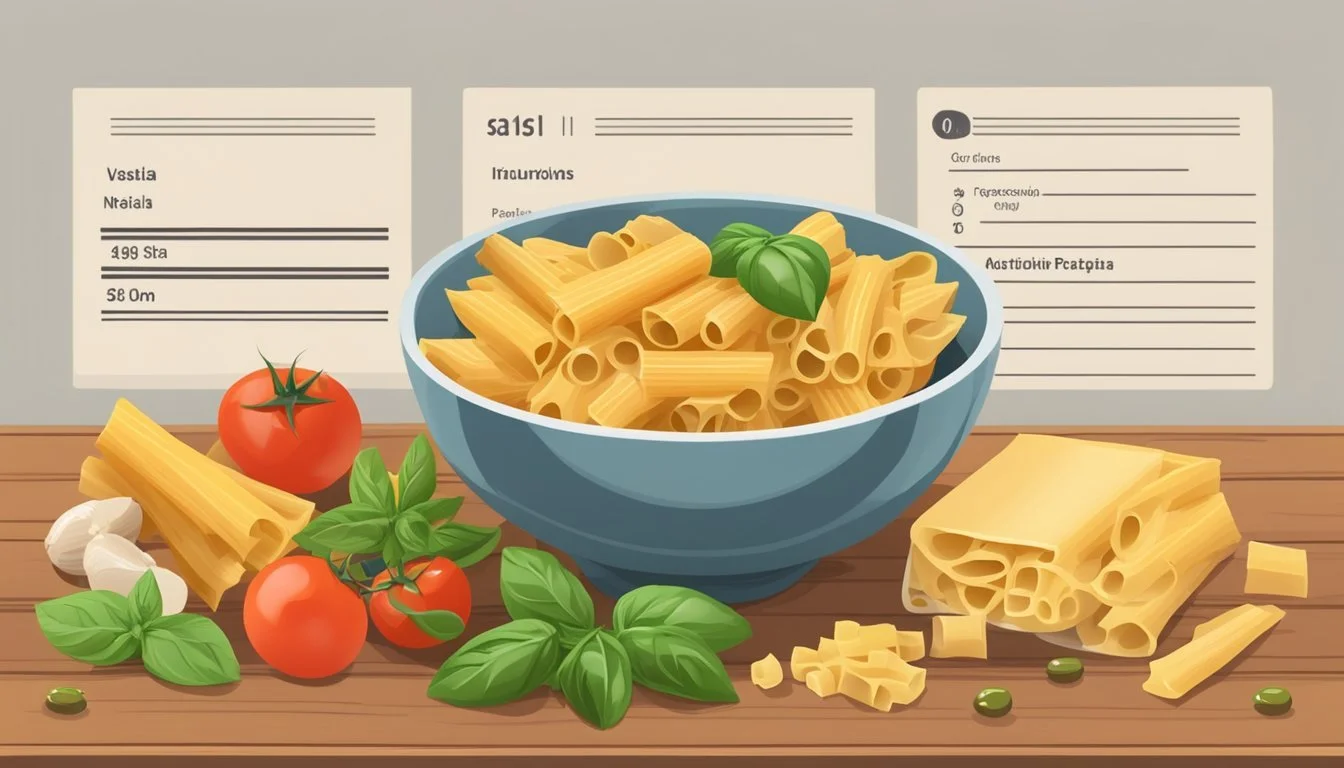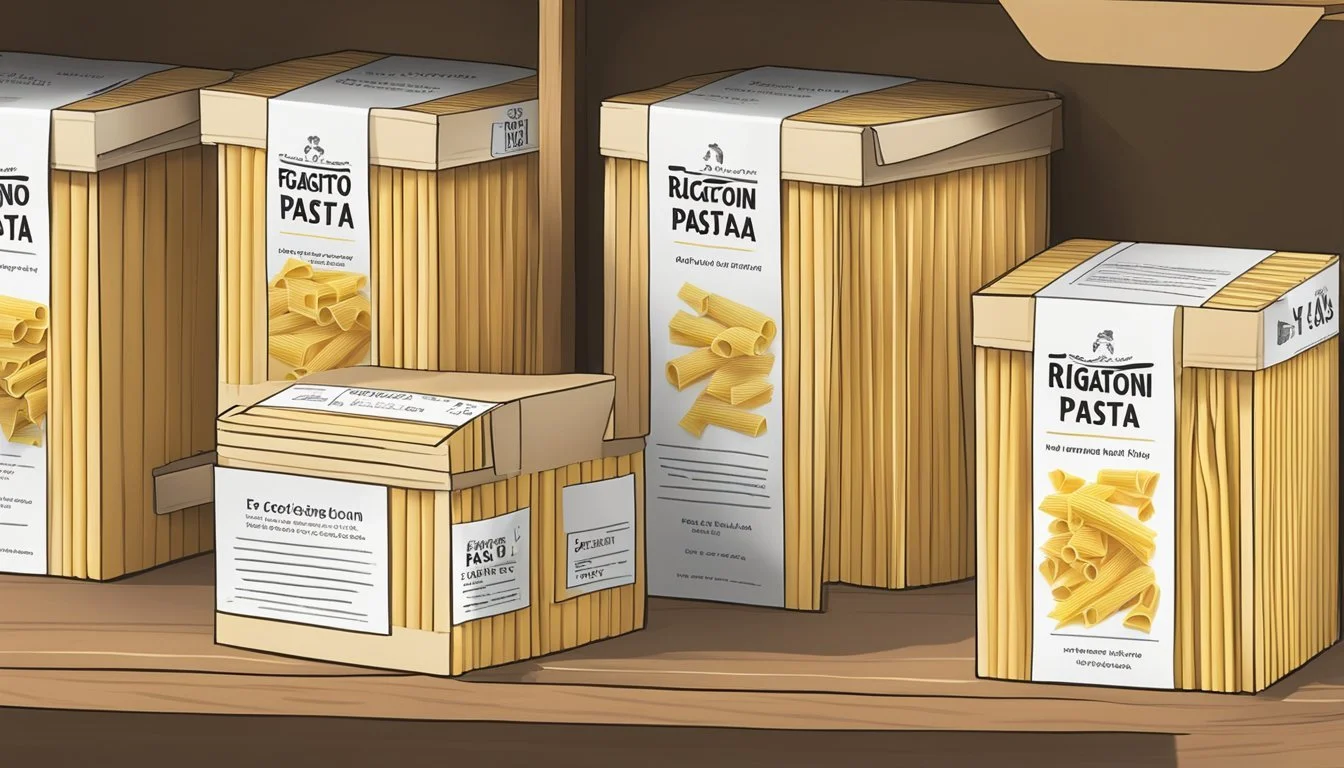How Long Does Rigatoni Pasta Last?
Shelf Life and Storage Tips
Rigatoni pasta, known for its ridged, tubular shape, is a versatile ingredient in many culinary dishes. The shelf life of this pasta (What wine goes well with pasta?), like other types, varies depending on its state—whether it's dry, freshly made, or cooked. Uncooked dry rigatoni generally has a long shelf life, typically ranging from 1 to 2 years when stored properly in a cool, dry place such as a pantry or cupboard. This longevity is owing to the low moisture content in dry pasta, which makes it less prone to spoilage.
Once cooked, rigatoni's shelf life shortens significantly. Proper storage is key to maintaining the quality and safety of the pasta. Cooked rigatoni should be kept in an airtight container in the refrigerator and is best consumed within 5 days. Allowing the pasta to cool completely before refrigeration is important to prevent condensation, which can encourage mold or bacterial growth. To maximize the quality and safety of cooked rigatoni, precautions should be taken to ensure that it does not remain at room temperature for extended periods, as this can accelerate spoilage.
The quality of rigatoni pasta, both dried and cooked, will also depend on other factors including the presence of sauce, how it's been handled, and the conditions under which it's been stored. If the pasta is combined with sauce or other perishable ingredients, it should be consumed more promptly, and storage recommendations for the most perishable component in the dish should be followed. When frozen, cooked rigatoni can last for up to two months, but it is important to freeze it properly to maintain its quality.
Determining Pasta Qualit
When assessing the quality of rigatoni pasta, the evaluator should focus on two main sensory inspections: visual and olfactory. These inspections can effectively indicate the pasta's condition.
Visual Inspection
One should start by examining the appearance of the rigatoni. Quality pasta maintains its original color without any discoloration. The presence of mold is a clear sign of spoilage; it often appears as fuzzy spots of white, green, or black. Additionally, pasta should not have a slimy texture, which suggests bacterial growth and degradation of quality.
Olfactory Assessment
The smell of pasta can be just as revealing as its appearance. Fresh pasta (how long does fresh pasta last?) should not emit any sour or off-putting odors. A pasta that has a bad smell is indicative of spoilage, and such odors can range from musty to sour, which are telltale signs that the pasta is no longer fit for consumption.
Storage Guidelines
Storing rigatoni pasta correctly is paramount to maintaining its quality and safety for consumption. Proper storage methods vary depending on whether the pasta is dry or cooked and if it is being kept at room temperature, chilled in the refrigerator, or frozen for long-term use.
Pantry and Cupboard
For dry rigatoni pasta, a pantry or cupboard is suitable, provided it is cool, dry, and away from sources of heat and light. Store the pasta in its original packaging or transfer it to an airtight container to protect from pests and humidity. Properly stored, dry rigatoni typically maintains its quality for up to two years but is best consumed before the date indicated by the manufacturer.
Refrigerating Cooked Pasta
Once cooked, leftover rigatoni should be cooled rapidly to room temperature and then placed in the refrigerator within two hours of cooking. Store the pasta in a shallow airtight container or a resealable plastic bag. To prevent the pasta from sticking together, one may lightly toss it with a small amount of olive oil. Separating the pasta from any sauce is advisable for optimal storage. Cooked rigatoni pasta will last up to five days in the fridge when stored correctly.
Freezing Techniques
Cooked rigatoni can be frozen to extend its shelf life. One should drain the pasta well and let it cool before mixing with a touch of oil; this is particularly beneficial if the pasta is cooked to al dente to prevent sogginess upon reheating. Store it in freezer-safe airtight containers or heavy-duty freezer bags. Thaw the pasta in the refrigerator or reheat it directly from frozen. When stored in a freezer, cooked rigatoni keeps well for up to two months.
Shelf Life Variations
The shelf life of rigatoni pasta varies significantly based on its state—dry, fresh, or cooked—and the storage conditions. Accurate storage extends its usability beyond the printed expiration dates.
Dry Pasta
Dry rigatoni pasta, when stored properly, can last 1-2 years beyond its printed "best by" date. The key to maximizing its shelf life is to store it in a cool, dry place away from any potential contaminants. Ideal storage conditions involve airtight containers that prevent exposure to moisture and other pantry pests.
Fresh and Homemade Pasta
In contrast, fresh or homemade rigatoni pasta, which usually contains eggs and moisture, has a much shorter shelf life. Refrigeration is essential, and one can expect it to last 4-5 days past its "best by" date. For longer preservation, freezing is recommended, where it can maintain quality for up to two months.
Cooked Pasta
Once rigatoni pasta is cooked, it should be refrigerate promptly. Leftovers can be safe to consume for 3-5 days when kept in a refrigerator. If frozen, cooked pasta remains consumable for up to two months, but the texture may change slightly upon reheating. Always store cooked pasta in airtight containers or resealable bags to maintain freshness and prevent contamination.
Safety and Foodborne Illness
When discussing the longevity of rigatoni pasta, it is crucial to consider the safety aspects related to foodborne illness. Understanding bacterial growth factors and the impacts of temperature management, such as freezer burn and condensation, help in preventing foodborne illnesses.
Bacterial Growth Factors
Temperature: The danger zone for bacterial growth is between 40°F and 140°F. Cooked rigatoni pasta should not be left at room temperature beyond 2 hours, as bacteria proliferate rapidly in this range.
Moisture: Cooked pasta contains moisture, which is a necessary component for the growth of bacteria. Ensuring that rigatoni is stored in airtight containers can reduce the risk of bacterial contamination.
pH Levels and Food Composition: Rigatoni pasta, typically having a neutral pH, is not as susceptible to bacterial growth as foods with higher protein content, but the risk still exists, especially when mixed with sauces or other ingredients that may promote bacterial growth.
Time: The longer pasta is stored, the greater the risk of bacterial growth. Typically, cooked rigatoni pasta should be consumed within 3 to 5 days when refrigerated.
Freezer Burn and Condensation
Freezer Burn: While not posing a food safety risk, freezer burn affects the quality of frozen rigatoni. It occurs due to air reaching the pasta's surface, leading to dehydration and oxidation.
To prevent freezer burn, rigatoni should be stored in airtight containers or freezer bags, removing as much air as possible before sealing.
Condensation: When rigatoni is thawed, condensation can occur, creating a favorable environment for bacteria if not handled properly.
To minimize condensation and associated risks, one should thaw frozen pasta in the refrigerator or use a microwave defrost setting, and then promptly cook it.
Serving and Reheating
When it comes to enjoying leftovers, the way one reheats rigatoni can make all the difference in preserving its texture and flavor. Here are the most effective methods.
Optimal Reheating Methods
In the Oven: Preheat the oven to 350°F (175°C). The rigatoni should be placed in an oven-safe dish, covered with foil to prevent drying, and reheated for about 10-15 minutes or until heated through.
In the Microwave: For a quick alternative, place the rigatoni in a microwave-safe dish, add a splash of water or broth, cover, and reheat on high for 1-2 minutes, stirring at 15-second intervals to evenly distribute heat.
Maximizing Flavor and Texture
Avoid Overheating: To maintain the rigatoni's texture, be careful not to overheat, as this can lead to a mushy consistency.
Retain Moisture: Adding a small amount of liquid can help retain moisture and revitalize the flavor of the pasta.
Separate Sauce Storage: If stored, keep the sauce separate from the pasta and combine when reheating to ensure the pasta absorbs the flavor afresh.
Incorporating Rigatoni into Meals
When adding rigatoni to meals, the focus should be on selecting complementary sauces and ingredients that enhance the pasta's hearty texture. Rigatoni's large tube shape and ridges are ideal for holding onto robust sauces and marrying with a variety of flavors.
Sauce Pairings and Recipes
Rigatoni pasta invites a range of sauce pairings from thick, meaty ones to lighter vegetable-based varieties. A classic rigatoni recipe might feature a tomato-based marinara sauce, while the hearty tubes also pair well with richer, creamier sauces. For instance:
Bolognese Sauce: This slow-cooked meat sauce clings to the ridges of rigatoni, providing a satisfying bite.
Alfredo Sauce: The creamy texture of Alfredo sauce works well with the pasta's robust structure.
Pesto Sauce: The grooves of rigatoni allow pesto sauce (how long does pesto sauce last?) to distribute evenly, offering a burst of herby flavor with every forkful.
Complementary Ingredients
Rigatoni's versatile nature means it can be enjoyed with an array of ingredients. Here are some ideal pairings:
Proteins: Hearty proteins like Italian sausage or ground beef add richness and depth.
Vegetables: Spinach, bell peppers, and mushrooms offer a nutritious and colorful component to rigatoni dishes.
Cheese: Incorporating cheese such as mozzarella, parmesan, or ricotta, adds a layer of melty or sharp flavor that is irresistible with rigatoni.
Creative Leftover Ideas
Leftover rigatoni can be transformed into new meals with ease. They can:
Be mixed with beaten eggs, additional cheese, and vegetables to create a frittata or pasta bake.
Serve as a base for a pasta salad, tossed with a vinaigrette, cherry tomatoes, olives, and fresh spinach.
Focusing on these elements will ensure that meals with rigatoni are not only delicious but also bring a sense of creativity to the table.
Pasta's Nutritional Profile
A serving of rigatoni pasta provides a balanced source of energy primarily from carbohydrates, with modest amounts of protein and minimal fat content. Understanding its nutritional profile can help inform dietary choices and meal planning.
Caloric and Macro-Nutrient Breakdown
Calories: Each serving of pasta contains approximately 200 calories, making it an energy-dense food suitable for providing quick energy.
Macronutrients:
Carbohydrates: With around 39 grams per serving, carbohydrates are the main component of pasta, supplying the body with glucose for energy.
Protein: Pasta provides about 7.3 grams of protein per serving, which contributes to muscle repair and growth.
Fats: Rigatoni is low in fats, with typically 1.2 grams per serving, including a balance of polyunsaturated and monounsaturated fats.
Macro-nutrient distribution is important for understanding how pasta fits into one's diet, particularly in terms of energy provision and supporting bodily functions.
Vitamins and Minerals Content
Rigatoni pasta also contains various vitamins and minerals, though in smaller quantities:
Iron: A serving can contain about 1.6mg of iron, around 9% of the daily value, which is crucial for red blood cell function.
Calcium: With approximately 8.9mg per serving, pasta provides about 1% of the daily value, necessary for bone health.
Potassium: There's a modest potassium content in pasta, about 55.7mg per serving, which aids in muscle and nerve function.
While pasta is not a significant source of vitamins, it can contribute to daily mineral intake, particularly when included as part of a balanced diet.
Signs of Spoilage and When to Discard
When to Discard Rigatoni Pasta: One should discard cooked rigatoni if it exhibits any signs of spoilage. Notably, pasta that has been stored in the fridge for longer than 5 days is more susceptible to spoilage and should be checked thoroughly before consumption.
Appearance: Cooked rigatoni should maintain its original color and consistency. Any discoloration or development of mold indicates spoilage. Mold may appear in various colors such as white, green, or black and should be considered a clear sign that the pasta must be discarded.
Smell: A sour or otherwise unpleasant odor is a strong indicator that the rigatoni pasta has gone bad. Any unexpected or off-putting smells suggest bacterial growth and are a warning that the pasta should not be consumed.
Texture: The texture of the pasta can change over time. If it feels slimy or sticky, this is an indication of bacterial growth.
Sign Action Required Mold present Discard immediately Off smell Discard immediately Discoloration Discard immediately Slimy texture Discard immediately
It is important to trust one's senses when evaluating the pasta's condition. If in doubt, it is better to err on the side of caution and dispose of the pasta to avoid the risk of foodborne illness.
FAQs on Pasta Preservation
When it comes to pasta preservation, specifically rigatoni, consumers often have numerous questions about shelf life and storage. This section aims to address those queries with clear guidelines and best practices.
Common Shelf Life Queries
Cooked Rigatoni:
Shelf Life: Properly stored in the fridge, cooked rigatoni typically lasts for 3 to 5 days.
Frozen: It can be frozen for up to 3 months.
Dry Rigatoni:
Best By Date: Usually has a shelf life of 1 to 2 years past the printed best by date.
Expiration: Dry pasta doesn't exactly expire but may degrade in quality.
Reheating Thawed Rigatoni:
Thawed rigatoni should be reheated thoroughly, following proper reheating instructions.
Rigatoni Left at Room Temperature:
Should be discarded if left out for more than 2 hours due to rapid bacteria growth.
Best Practices for Storage
Dry Rigatoni:
Store in a cool, dry place in an airtight container.
Keep away from strong odors and moisture to prevent spoilage.
Cooked Rigatoni:
Place in an airtight container and refrigerate promptly.
For freezing, ensure rigatoni is cooled completely to avoid ice crystal formation.
To prevent stickiness, one may lightly rinse with cool water before storing in the fridge.
When thawing, do so overnight in the refrigerator for optimal results.



